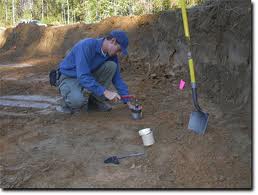Businesses and lending institutions often require a Phase I Environmental Site Assessment (ESA) to be conducted prior to any transactions of land or building purchases, new development and bank loans. The purpose for conducting an ESA is to assess any current or historical land use practices and to identify the presence of any hazardous substances or petroleum products on or adjacent to the property of interest. Conducting an ESA limits the potential for the owner or lender of the property from being named as a potentially responsible party.
Process of the ESA
Determination of environmental condition and identification of potential contamination on a piece of land is one of the most important steps in a real estate transaction. Phase I and Phase II ESA’s notify potential buyers of property contamination problems before purchase, insuring that the buyer will avoid liability and/or costs associated with cleanups. Phase III ESA services aid the property owner in cost-effective remediation efforts.
Identifying Contamination
The likelihood of contamination is usually identified during a Phase I environmental site assessment. To establish the presence of actual contamination on site, a more comprehensive investigation is undertaken.
Phase I
The purpose of a Phase I Site Assessment is to identify, through research and visual inspection, any environmental problems resulting from the use of hazardous materials.
Tasks include:
- Evaluating storage, handling, treatment, and disposal of materials and waste.
- Investigating site for evidence of underground storage tanks or spills.
- Researching history of the facility, soil type, and ground and surface water.
- Reviewing the regulatory files on sites surrounding the property and/or properties.
Phase II
When a Phase I investigation uncovers questionable conditions, a Phase II sampling study is required which evaluates potential sources that may be contaminated, such as air quality, soil and water. Samples are collected including soil, water, and other hazardous materials. A written report detailing the results is written outlining applicable regulations, recommendations, and cost projections.
The process of a Phase II ESA involves sampling and assessment of soil, groundwater, and surface water as well as the assessment of buildings and structures. Depending on the planned use of a piece of land, different environmental criteria are applied in the assessment. Where necessary, an environmental cleanup involving remediation of soil, surface water, groundwater and sediments is undertaken. In industrial settings, an assessment and decommissioning of process equipment is often required. Where possible, recycling is attempted. Depending on analytical results obtained from the laboratory a Phase III Environmental Site Assessment may be recommended.
Phase III
Remediation procedures for environmental problems that are identified during the Phase I and Phase II investigations may include excavation, disposal, bio-remediation, or any other treatment of conditions subject to regulatory action. A Phase III includes the design, regulatory filings, and actual remediation or removal of hazardous materials such as underground storage tanks, waste drums contaminated soils, and asbestos.
Discover more from Helping NYC & Long Island Commercial Tenants, Owners, and Developers
Subscribe to get the latest posts sent to your email.





